Plan B Speakers 2019
by Bob Richards E. E. T.
I've built variations of this general design a few times in the past. It's a known very good design. This particular version did not disappoint.
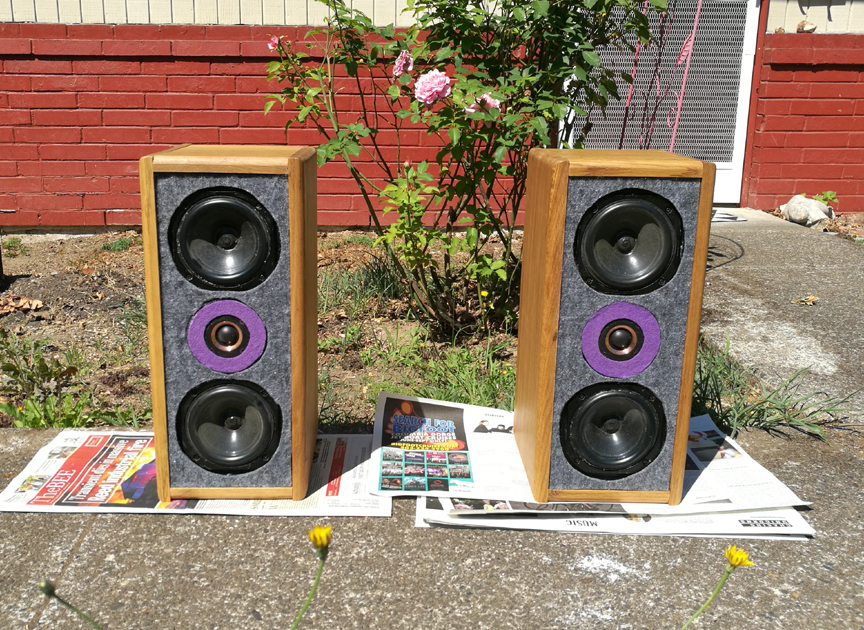
I love using white oak for cabinets, because it's beautiful, light colored, very heavy and very hard. It's therefore very hard for the acoustic energy inside the cabinet to re-emerge through the cabinet walls. I recessed the front 3/8 inch so I could glue 3/8 inch thick acoustically absorbtive felt to the front surface, to absorb what little emission there might be. There will still be "baffle step" effects, but you can't really get around those unless the drivers are mounted on a very big wall. the purple felt on the Seas Millenium tweeter drivers is thin regular felt. Treble is so directional, I doubt if that felt makes an audible difference, but I like how it looks.
The wiring just comes out to Banana Jacks on the rear, so they can be bi-amp'd with an active crossover/EQ, or a passive crossover could be attached externally to the rear of the cabinet, and thereby be easy to mess with during calibration.
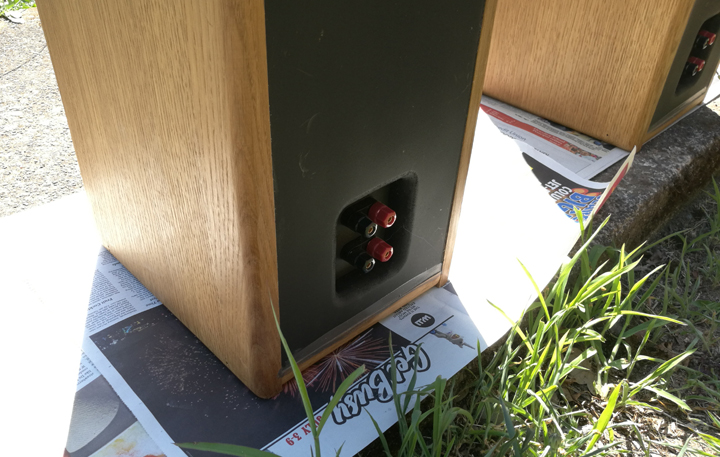
Here's the specs on the drivers:
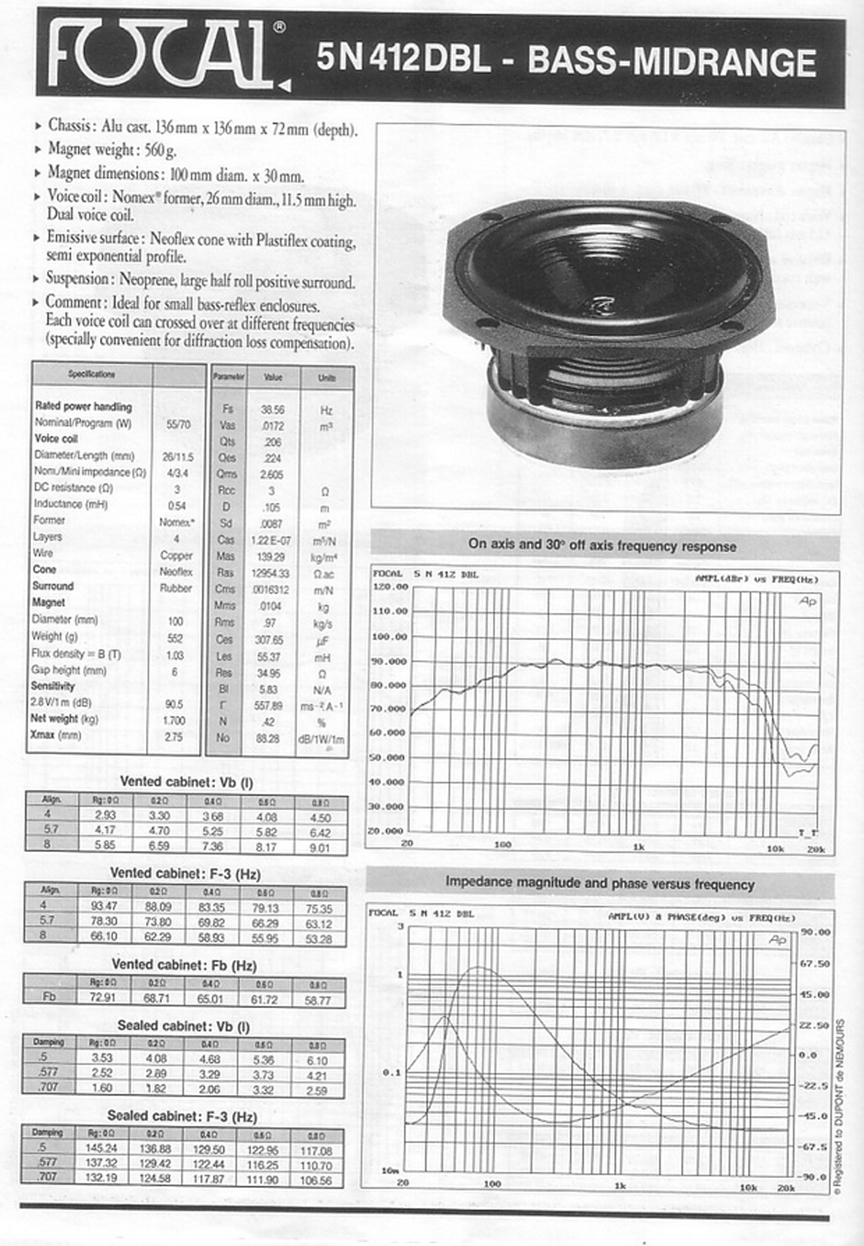
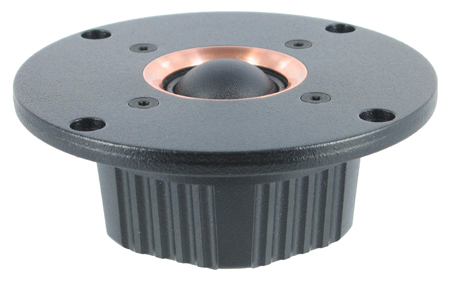
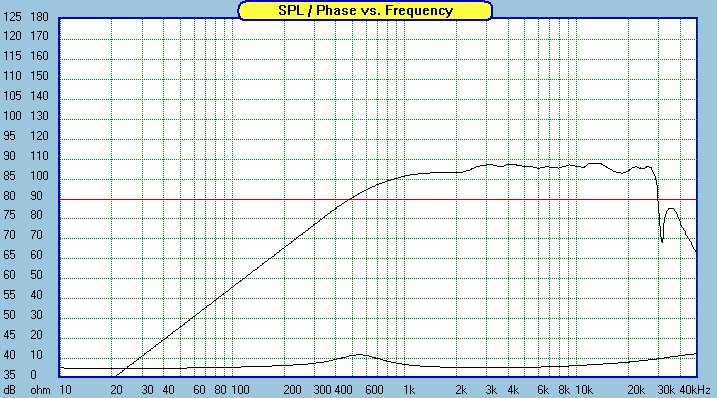
With Frequency Response (FR) graphs this smooth and flat, I could use a one pole passive crossover at 2-4kHZ no problem, and then just have to worry about baffle step, and low end rolloff below 100HZ, unless there a separate woofer that does the bottom end which there will be (with X=100HZ).
The Seas Millenium tweeter was arguably "state of the art" back in 2000 when it came out. I doubt if there's a one inch dome tweeter made since that is significantly better. It's said to have about twice the Xmax of most other one inch domes. It's one of very few one inch dome tweeters that can perform real well down to 1.4kHZ (with a 4 pole active filter). Being able to avoid a crossover function in that upper midrange frequency area (2kHZ - 10kHZ), improves the corherrance of the stereo effects significantly, in my opinion.
The five inch Focal drivers may not be state of the art by todays standards, but the relatively high Xmax spec means I could run as woofers in a small room, plus, I think they're plenty good. Purists might feel that harder cones are better because of the higher resolution argument. Others might argue that softer cone materials are easier to listen to over time. Less in your face. There might be a tiny bit of real-time dynamic range compression with the softer cone materials. Harder cone materials usually have resonance or "cone breakup" distortion issues in the upper midrange frequencies (2-5kHZ), right where the sensitivity of the human ear is at its max. If that peak in the frequency response isn't accurately well neutralized electronically, it would probably make a speaker way more difficult to listen to over time.
Here's a bunch of pictures I took during the build process:
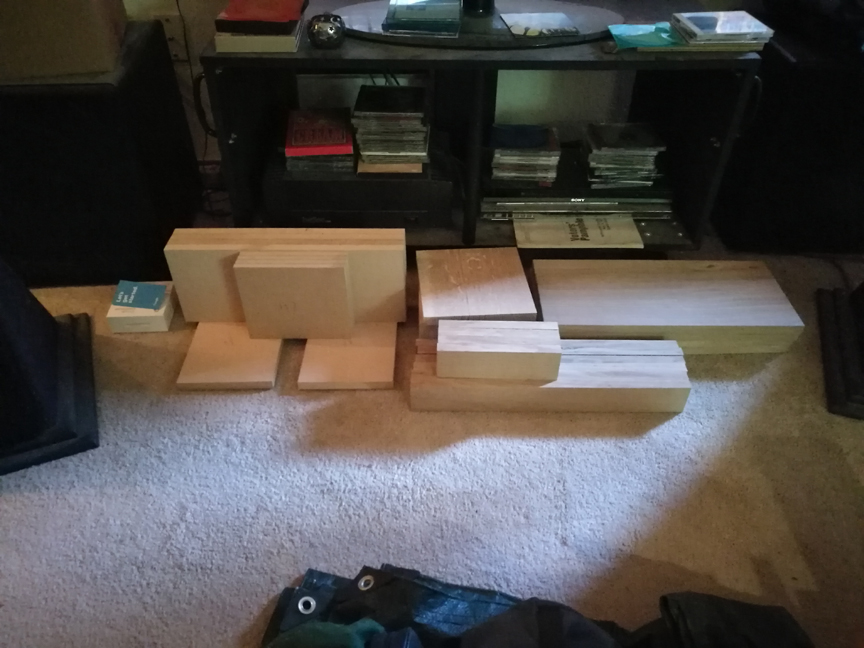
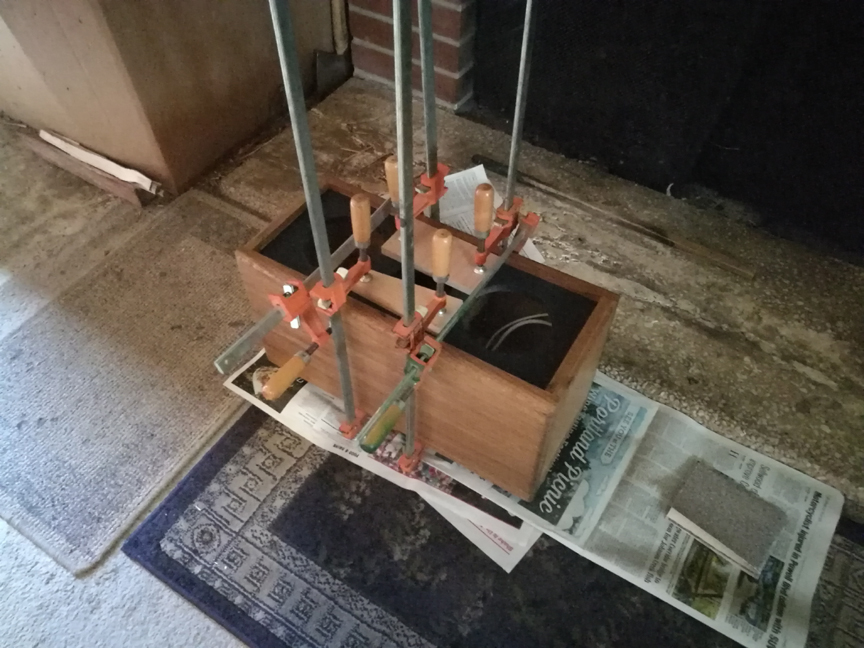

The internal acoustic padding is where a lot of speakers fall short. You want to completely dissipate that rear energy, which otherwise re-emerges through the diaphrams FREQUECY SELECTIVELY (or thru the walls of the enclosure in some cases). In other words it "colors" the sound in a very undesireable way. A "gaussian" dissipation mechanism would be close to ideal. To achieve that, I glued the relatively stiff 3/8 inch thick wool felt tight against all internal surfaces. Then put a layer of 1/2 inch thick foam rummer on top of that. Then some dense wads of "Acousta-stuff" (like fiberglas insulation, which would work fine too) (the white stuff). then more foam rubber (the pink stuff) toward the rear. It's all glued in place as in the photos. The two shelves are there for their abilty to break up the potential end to end resonant issues, and to make the center part of the front baffle board (3/4 thick MDF) more rigid; less likely to ever vibrate significantly. These internal openings don't line up, so any resonance is minimized.
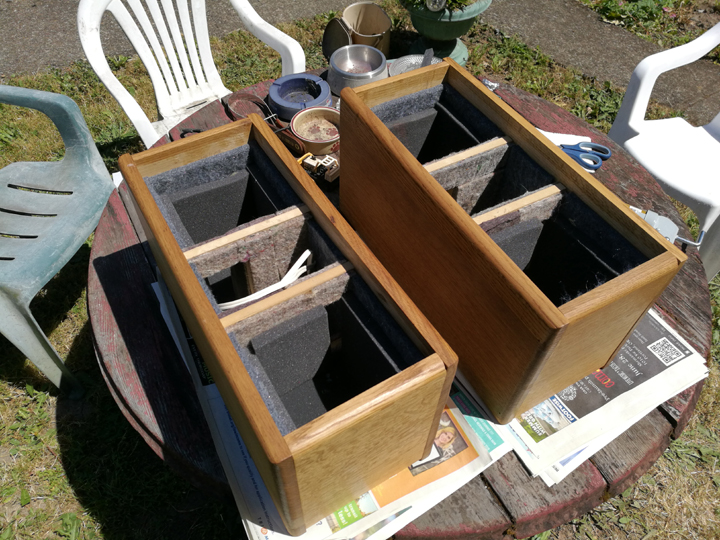
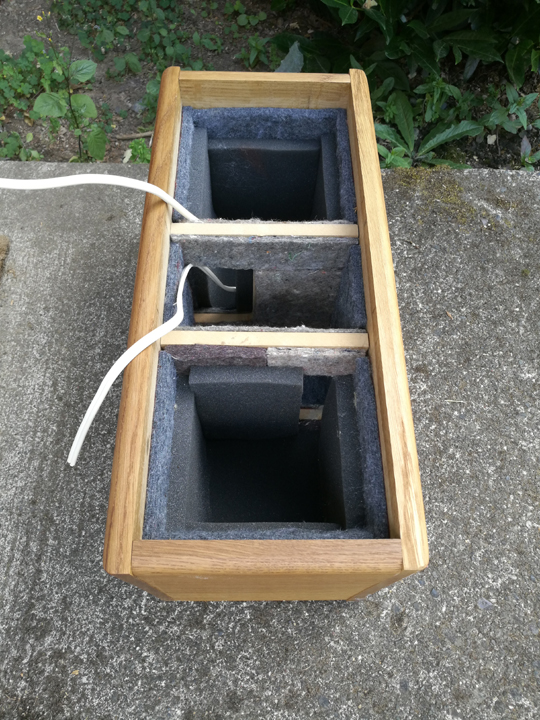
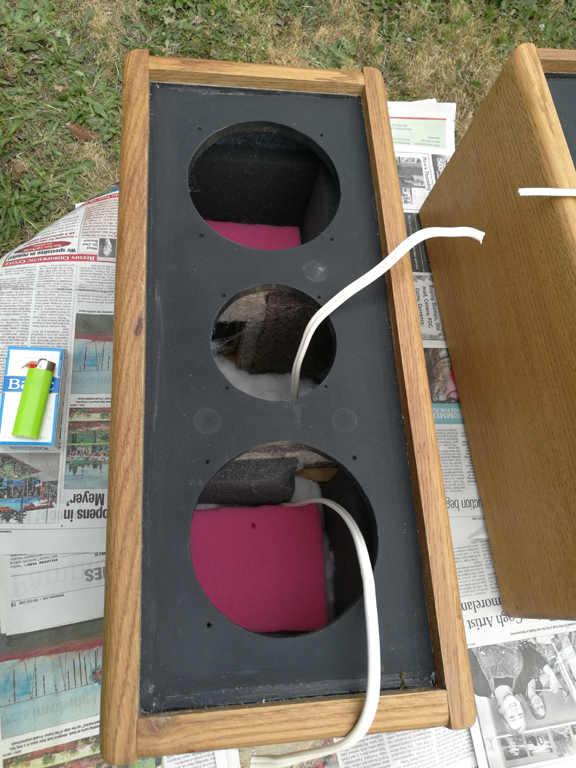
I don't use the second voice coil winding in the Focal drivers for servo feedback of any kind. The two windings are wired in series to create a 16 ohm driver (spec sheet is wrong - I measured them), and the two 16 ohm drivers wired in parallel gives me an 8 ohm load for the power amp.
After deciding to part out my Aurium Waveguide speaker system (my living room is too small for that design), I decided to use the active crossover I had built for that system, on this system, since it would be easy to make the necessary modifications to the circuitry. I just bypassed the "open baffle EQ" circuits, and added some "Baffle Step" EQ, as shown in the schematic below, and now it's just what I want for the new system (this one).
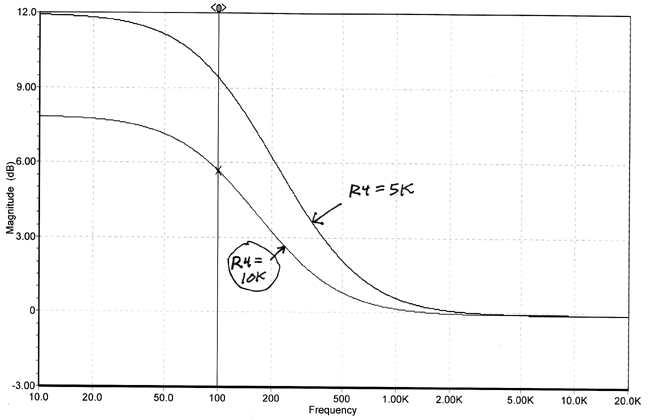
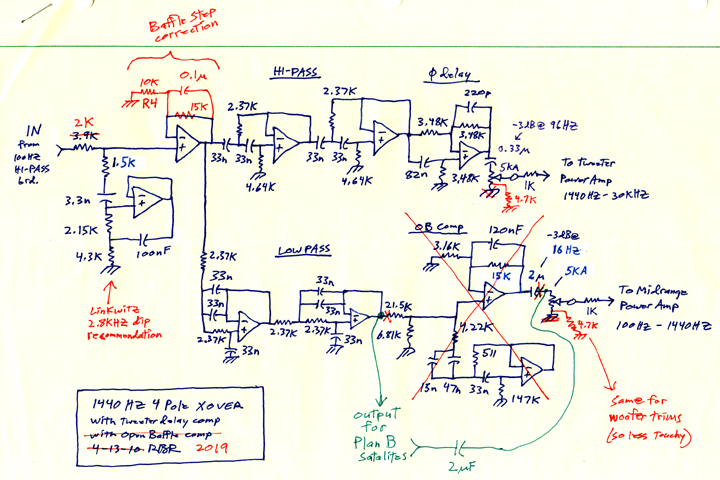
Above on the left is the SPICE model graph for the Baffle Step EQ.
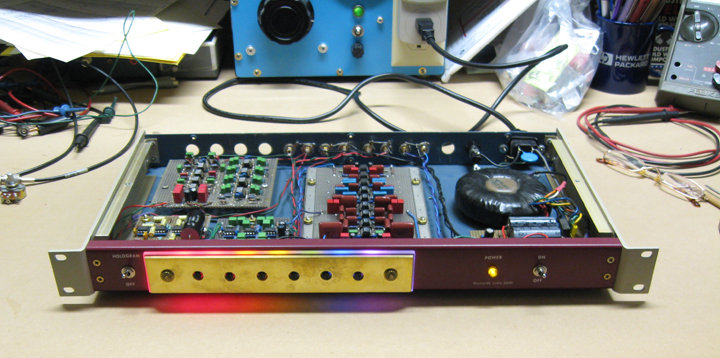
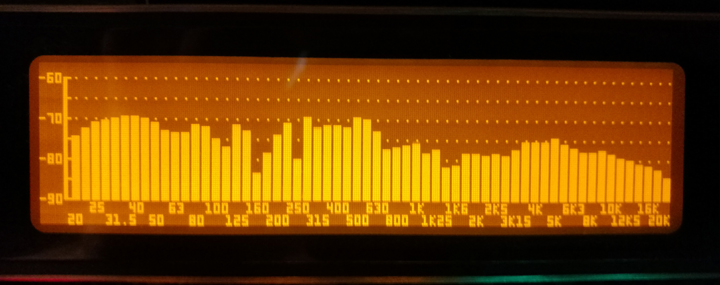
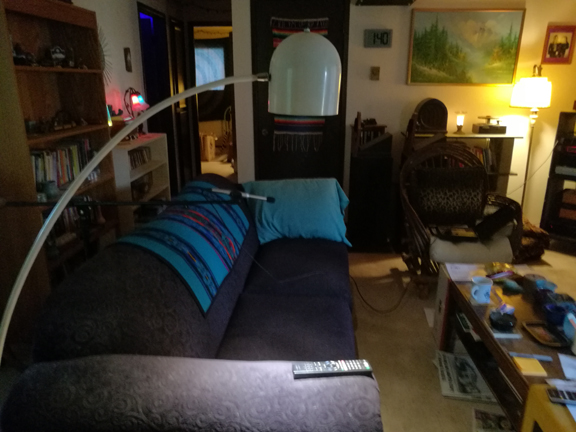
This above graph was done with a Pink Noise test signal, with the "calibrated" mic positioned right where my head would be when sitting on the couch.
Like the vast majority of listening rooms, the frequency response gets a bit ugly by the time the acoustic energy gets from the speaker diaphrams to your ears at the couch.
Every room reflection, causes a "comb filter" frequency response anomolie, and a typical room will have MANY acoustic reflections.
These reflections are usually only a major issue in the lower midrange frequencies, where room boundaries come into play more.
Since I don't have an anechoic chamber for testing, and my "calibrated mic" is just a Behringer DEQ2496 rig, I can only guess at what this above graph really shows.
The roughness in the frequency response between 90HZ and about 300HZ looks somewhat typical of a room this size and shape.
The dip around 1.5kHZ could be a phase thing. I'll swap the phase on the tweeters and measure again.
What should work correctly on paper, and what actually happens in the real world are often two different things.
The drivers are somewhat reactive, meaning they can introduce phase shift that wasn't taken into account when the crossover circuit math was done.
The Peerless brand 12 inch XXLS woofer below was top of the line about 20 years ago, and is still very competitive with any of todays woofers.

Below you can see the very well vented spider. On the right is a better look at the cabinet.
The very low bass is quite juicy. Especially noticable on percussion.
How do they sound?
Dynamic, Lush, Involving, Very Detailed... Never Annoying.
After living with them for over a year, Watching Youtube videos more often than anything else anymore,
I'd say they are much better than 95% of the program content out there.
Every once in a while some really good quality program content comes thru from Youtube videos, or DVDs or CDs, and the clarity is beautiful and amazing.
Makes me want to sit up and pay attention. To marvel at the superb lush soundscape.
These speakers are very well suiteed for the room they are in.
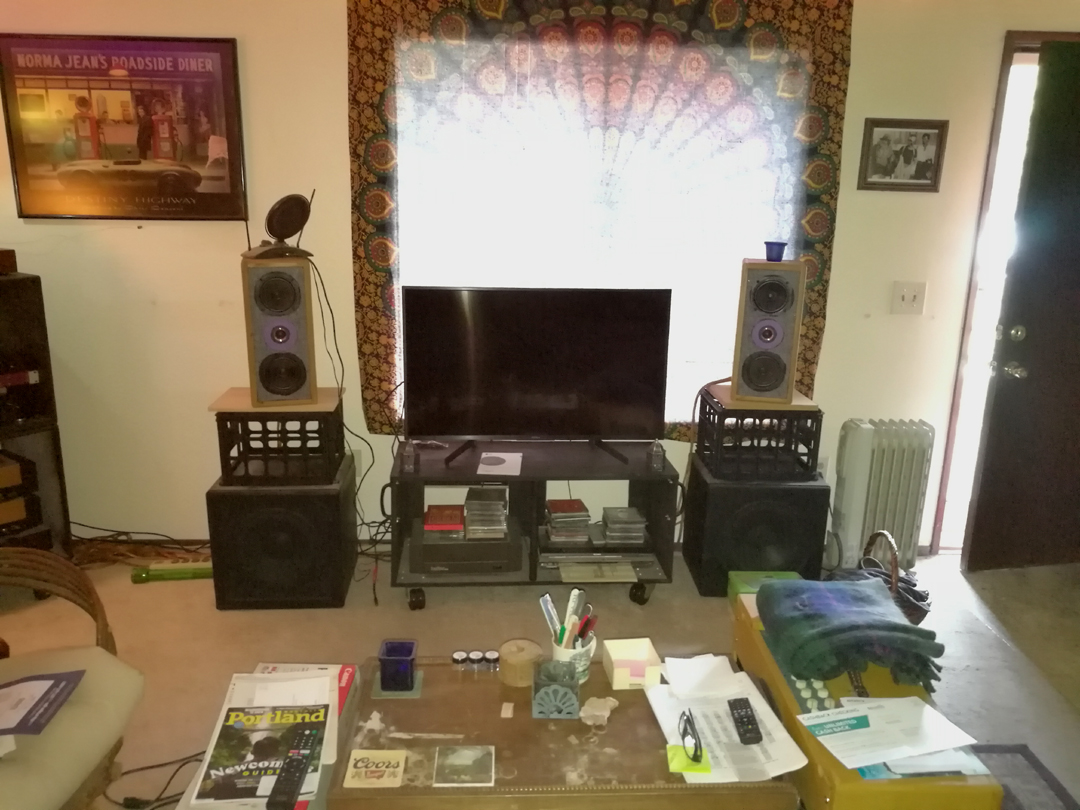
I've since put grill frames on the woofers too.
The Peerless woofer on the right (below) is actually about 10 years older than the one on the left (shown above).
It doesn't have as high a Xmax spec, but works fine for any SPL levels I'd ever want.

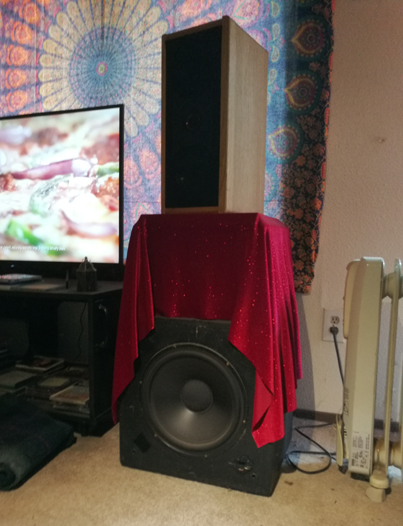
You would think that having a harder cone midrange driver, with its higher resolution would sound even better, but after living with these for over a year, I'm not sure.
I'm quite thrilled with these.
